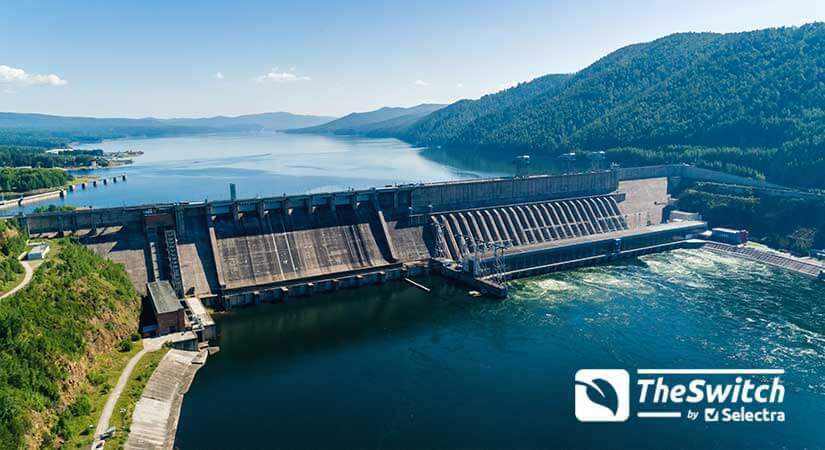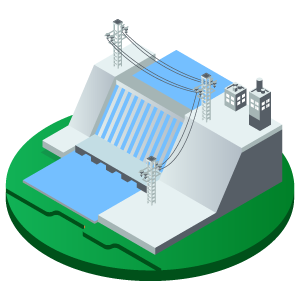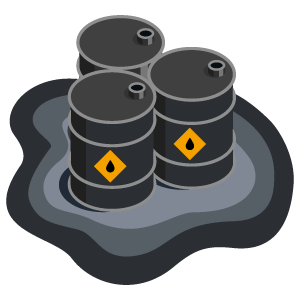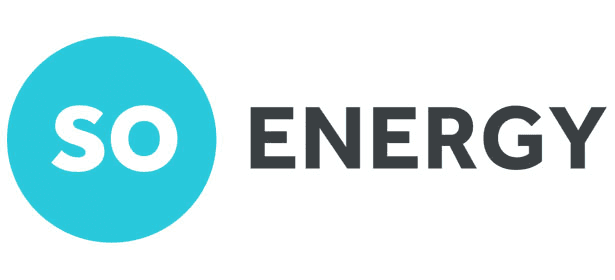Is Hydroelectric Power renewable? Our complete guide

Hydroelectric power is energy created using the power and movement of flowing or falling water. It currently makes up only around 2.2% of Britain's total electricity supply, but has a long history in the country, having first been harnessed in 1878 to power the lights of Cragside country house in Northumberland. Globally, hydropower accounts for around 17% of all energy production, so should the UK rethink its approach to going green?
As of 2017, hydropower accounts for around 16% of our renewable energy. This makes it our fourth most-generated renewable energy source after wind energy, tidal energy and solar energy. Globally, however, it makes up around 60% of all the renewable energy produced. Should we be using it more? Let's decide by taking a closer look at it.
How does hydroelectric power work?
Hydroelectric power is a form of renewably generated electricity. It is created by harnessing the force of running, moving or falling water from rivers, the sea’s tides, or by using larger man-made systems such as dams and reservoirs.
To turn water’s natural power into electricity requires the use of turbines, converting its kinetic energy into mechanical energy, which a generator then turns into electricity for our consumption. There are numerous ways of generating hydroelectric power in different quantities and in different locations across Britain.
Depending on the amount and method of generation, it can then be used immediately, stored or fed into the national grid for use in households, businesses and communities across the UK.
What are the three types of hydroelectric power?
There are three main types of hydroelectric power that are used most commonly. In this section, we're going to take you through them and explain what each involves.
Pumped-Storage Hydropower

Pumped-storage is a method of generating hydropower on a large scale by moving water between reservoirs at different altitudes. Using gravity, water flows at high speeds from the higher reservoir downwards through turbines to the lower reservoir, powering a generator and generating electricity. It can then be pumped back up to the higher reservoir to repeat the cycle.
When demand for electricity is high, water is released from the upper to the lower reservoir, flowing downwards and immediately spinning the turbines. At some power stations this process only takes 30 seconds, meaning it can react quickly to increased demand and produce large amounts of energy in a short time. When demand is low, usually at night, the water is pumped back up to the higher reservoir using cheap, off-peak electricity from the national grid to power the pumps.
Pumped-storage power stations spend a fair amount of time dormant and are only activated when the national grid needs additional electricity to meet increased demand.
The pumping of water upwards means pumped-storage will often actually consume more electricity than it generates. Its main benefit, then, is as an energy storage system and to balance out and supply the national grid at short notice during electricity shortages.
Run-of-the-River Hydropower
Run-of-the-river is a form of hydropower generated using turbines located in rivers that spin as the water flows through them, powering a generator. This form of energy is more difficult to control, unless the river is dammed, and is difficult to store. Instead it creates a constant stream of energy that must be used at that moment, or go unused.
Run-of-the-river hydropower cannot create as much energy as larger hydro power stations that use and control large bodies of water in reservoirs and dams. It is also less reliable since river water levels can fluctuate depending on the seasons and amount of rainfall for example. However, it does have the benefit of not creating any harmful greenhouse gases that reservoirs can create from vegetation decomposing in the water, since it is continually flowing. It is also a low-cost method of hydroelectric generation as the infrastructure required is fairly inexpensive to install and maintain.
Micro HydropowerHomeowners lucky enough to have a stream or river flowing past their property can often install micro-hydropower turbines and generators to generate their own electricity. Micro hydropower projects are typically much cheaper to install and can generate a modest but reliable amount of electricity. This can be used or exported to the national grid to earn a bit of money under a government feed-in tariff.
Tidal and Offshore Hydropower
One of the more modern hydropower innovations is ‘tidal energy’ or ‘offshore hydropower’. This involves harnessing the power of the changing tides of the sea to generate energy to turn into electricity. Tidal power turbines are often placed in shallow waters off the coast and as the tides flow in and out, the water flowing back and forth passes through large turbines, powering a generator. Since the tide changes multiple times a day in a reliable cycle, it is a consistent and sustainable source of energy generation.
Currently tidal and offshore hydropower projects in the UK are few and far between as it is a new and somewhat unproven technology. However, there are numerous plans for tidal energy projects in the UK, which could potentially increase Britain’s overall hydropower generation massively in the future.
In fact, Britain is leading the way with the world’s first ‘tidal lagoon’ project planned for construction off the coast of Wales in the next few years. The ‘Swansea Bay Tidal Lagoon’ project could potentially generate enough power for 155,000 homes and similar projects could also be established elsewhere along the UK’s coastline.
Britain’s Hydropower Plants and Projects
The vast majority of hydropower in the UK is generated in Scotland and Wales in hydroelectric power plants, located within reservoirs and dams across the Scottish Highlands and Welsh countryside.
Dinorwig Hydro Power Station in north west Wales is the largest hydropower plant in the UK by far. It has a total capacity of 1,728 megawatts which is enough to power a whopping 2.5 million homes.
It has been generating electricity since 1984 and is used as a pumped-storage system that can provide back-up electricity at short notice, during times of high demand.
In Scotland, the Cruachan Power Station in Argyll and Bute can generate 440 megawatts of hydroelectric power and power up to 225,000 homes. It has been in operating since 1965 and is also a pumped-storage power station. It is often dormant, but is used to provide back-up energy to the national grid when demand is high. Its turbines can begin operating at full capacity within just 30 seconds of being activated, meaning it can quickly supply electricity to the grid at a moment’s notice.
In England, hydroelectric generation is far less prevalent. The largest hydroelectric plant in England is Kielder Power Station in Northumberland which can generate a modest 6 megawatts of electricity and has been in operation since 1982. It can produce around 20,000 megawatt hours of electricity per year which is enough to power around 4000 homes, and offsets 8,600 tonnes of CO2 per year.
| Proportion of UK Energy Mix | Proportion of UK Renewables | Hydro power trend |
|---|---|---|
| 2.2% | 16% | 3% |
| First Hydro power generated in: | Annual industry turnover | Hydro power jobs |
| 1878 | £639m | 5,778 |
Is hydroelectric power good or bad?
In this section, we're going to weigh up the pros and cons of hydroelectric energy. Let's start with the good:
What are the advantages of hydropower?
Hydropower is a very reliable and cost-effective source of renewable energy. The main advantages of hydroelectric power include its being:
1. Highly efficient, reliable & sustainable
Hydropower generation relies only on a constant flow of running water, meaning it can generate energy 24 hours a day when installed in rivers or waterways. What’s more, a typical hydro turbine can convert 90% of the kinetic energy of the water into electrical power, making it the most efficient source of renewable energy. Compare this to solar panels which typically only convert 16.5% of solar energy into usable electrical power and it is clearly a far more reliable source of energy.
Compared to the variable nature of wind and solar energy, which both depend on the weather conditions and time of day, hydropower is the most reliable and sustainable form of renewable energy.

2. Cheap to generate
Hydropower is one of the most cost-effective sources of renewable energy around. Whilst installing the infrastructure is fairly costly, once it’s up and running, it’s a low cost source of energy to generate as water is a free and natural resource.
This is one of the concerns in terms of developing renewable energy sources, so it's no surprise that hydroelectric power has flourished to such an extent in other parts of the world.
It makes you wonder... what's holding the UK back?
3. Long-lasting infrastructure
Infrastructure such as hydroelectric dams, man-made reservoirs and hydro-power stations are typically very durable and can last 50 to 100 years with only maintenance needed to keep them functional. There are many long-standing examples of this in the UK including: Bonnington Power Station (1927) and Lochaber Hydroelectric Scheme (1929), both still in operation in Scotland.
Since they are so hardy, hydropower projects are often excellent value investments in the long term, despite the high initial costs of installation and construction.
4. Easier to store than other renewable energies
Energy generated from water power can also be stored in large quantities and fed into the national grid as and when needed. It is the only renewable energy that can be stored in large quantities, through pumped-storage systems which store large bodies of water in reservoirs.
Although the electricity itself is not stored, the water is, and it can be converted into electricity when needed. This makes hydropower a reliable alternative solution to electricity generated by wind and solar power, both of which must be used as they are generated.
5. Quick to generate during high demand
Large-scale hydropower plants located within reservoirs and dams can be switched on and off to increase or decrease electricity generation as and when needed. As mentioned previously, some hydropower stations can begin generating electricity within just 30 seconds. Therefore when there are major power shortages due to huge demand, hydropower can be an ideal solution to rapidly generate new electricity reserves and balance the grid.
One common example of spikes in demand is during advertising breaks of popular TV programmes or major sporting events such as the World Cup. As millions of people across the country rush to put the kettle on at the same time, demand for electricity skyrockets. Pumped-storage power stations prepare for this and can generate vast amounts of electricity very quickly to ensure we can all enjoy our simultaneous tea breaks.
What are the disadvantages of hydroelectric power?
Whilst we are big fans of hydropower and renewable energy sources in general, it still has its difficulties and restrictions. The disadvantages of hydroelectric power include:
1. Not as ‘clean’ as it seems
Although hydropower is typically thought of as a clean source of energy, it can surprisingly produce harmful greenhouse gases when generated from hydropower plants with dams and reservoirs. Decaying vegetation and other organic matter or run-off from surrounding farmland or logging sites for example, can enter the dams and reservoirs.

Over time, as the water levels rise and fall, gases from these pollutants are released into the atmosphere containing methane and carbon dioxide. Both of these are greenhouse gases and contribute to global warming as they linger in the planet’s atmosphere, absorb the sun’s heat and increase the Earth’s temperature. This has the knock-on effect of causing climate change and problems such as rising sea levels due to melting of polar ice caps, and extreme weather such as heat waves or droughts.
A study from Washington State University in the USA found that around 1.3% of man-made greenhouse gas emissions worldwide come from reservoirs. Therefore large-scale hydropower production unfortunately has a carbon footprint and can in fact have a harmful effect on the planet.
2. Negative impacts to local communities and wildlife
Since hydropower generation typically involves making major changes to environment in which it is located, it can cause issues such as displacement of communities that rely on the river for fishing for example. Damming a river can also affect wildlife that previously relied on the river and its surrounding habitat for food or protection. Environmental disruption is typically the main reason for opposition to new hydropower projects around the world.
3. Expensive to construct
To construct large-scale hydropower projects is expensive. For instance, the Swansea Bay Tidal Project currently being planned is estimated to cost £1.3 billion to construct. These huge costs often cause projects to get cancelled as the developers fail to gain sufficient funding or government subsidies to make it financially viable. Fortunately however, once the infrastructure has been built, the ongoing maintenance and running of hydropower projects is fairly minimal and only requires a handful of employees to keep it running.
4. Limited capacity in the UK
Unfortunately large-scale hydropower generation is somewhat restricted in Britain due to the lack of available and suitable sites, not already utilising hydropower. To generate large-scale hydroelectric power requires vast bodies and sources of water meaning suitable locations for constructing hydro projects are at a premium. Inland hydropower capacity is fairly limited in 2018, restricting new hydropower to small-scale, micro-projects or to offshore and tidal projects.
The future of hydropower in the UK
With the potential for new large-scale hydropower capacity in the UK being limited in recent years, hydropower generation has grown very little in recent times. In 2009, hydropower in the UK produced a total of 5.2TWh (terawatt hours) of electricity and in 2016 this was only slightly more, at 5.4TWh - a tiny 3.8% increase. In comparison, wind energy grew from 9.2TWh in 2009 to 37.5TWh in 2016 - an increase of 308%. Growth like this in hydroelectric power production is unlikely to occur without significant investment and innovation.
Swansea Bay Tidal Lagoon
There have, however, been proposals for new hydropower projects put forward in the UK. The most exciting and ambitious at the time of writing was the ‘Swansea Bay Tidal Lagoon’ project, which would be the first of its kind in the world. Plans were for the lagoon to be constructed off the coast of South Wales, with hydro turbines built into a 9.5km ‘U’ shaped wall. The energy of the changing tides around Swansea would generate electricity as the seawater flows in and out, filling and emptying the lagoon as it passes through the turbines. The natural energy of the tides would generate 320 megawatts - enough electricity to power 155,000 homes.
The £1.3 billion project was hoped to be in operation by 2023 but was shelved in May 2018. It’s hoped it could eventually provide up to 10% of the UK’s total electricity and cut 236,000 tonnes of CO2 a year. If successful, it would also create over 2,000 construction and manufacturing jobs initially, plus around 150 long-term jobs. It would also form the blueprint for up to five other tidal lagoons located around Britain’s coast, greatly increasing the country's hydropower capacity.
Progress has stalled and the project’s completion remains uncertain after the government’s delay in deciding whether to support the project financially. The government appear to be stalling as they are unsure if the cost to the taxpayer would be worth it. Their primary concerns appear to be due to significant costs and the brand new, unproven technology proposed.
Hydropower projects in Scotland
Scotland continues to lead the way in growing hydroelectric capacity in the UK. According to Scottish Renewables, in 2016 there were 27 hydropower schemes with planning consent and 14 additional projects under construction. These projects had the potential to power over 42,000 homes in Scotland.
As of April 2018, Scotland had already completed and begun operating the world’s largest ‘tidal stream project’ 2km off the north coast, named ‘MeyGen’. MeyGen has a much smaller capacity of 6 megawatts compared to the 320MW the Swansea Lagoon would be able to produce.
For the rest of the UK, the best option for future hydropower growth may be to repurpose a number of existing watermills to generate hydropower. According to the government’s Department for Business, Energy and Industrial Strategy, this could add approximately 1 to 2% of new capacity to Britain’s hydropower generation, which although minimal, would still be of benefit to the UK’s renewable energy supply.
Both large-scale tidal energy projects and small-scale micro-generation projects appear to be the best way forward for Britain’s hydropower future. Whilst tidal projects provide the most potential in terms of sheer amount of power generation, they do require major investment and government support. Conversely, small-scale projects in rivers and waterways may only generate modest amounts of electricity, but are low cost, require no government support and cause minimal disturbance to the environments in which they are installed.
Which UK Suppliers Provide Energy from Hydroelectric Power?
Whilst hydropower only makes up a small proportion of renewable energy generated in the UK, there are some suppliers offering competitively priced electricity sourced in part from hydropower.



